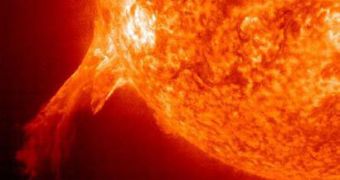For the past 2 or so years, our own star has kept an unusually low profile that has worried most scientists, involving both the numbers of its spots and its wind-like phenomena. However, over the past month, it has finally shown distinct signs of an increased activity, which is normal to happen during its 11-year cycle.
The Sun's cycle includes highs and lows (with a peak during the approximate middle of the respective period), which translate into silent activity or casual violent bursts that subsequently disrupt satellite transmissions and radio communication on Earth. Such was the case about 5 years ago, during Halloween, when one of the most atrocious solar storms ever recorded – and definitely the most powerful one of modern times – affected the Earth and spacecraft alike, causing auroras to be seen in unprecedented locations far to the south.
The phase characterized by a low number of sunspots is believed to have passed, as the records from October indicated an increasing presence of the phenomenon. As David Hathaway from NASA's Marshall Space Flight Center in Huntsville, Alabama, says, as quoted by Space, “I think solar minimum is behind us. Last month we counted five sunspot groups. This represents a real increase in solar activity.”
The sunspots represent cool zones on the Sun's surface, in which the magnetic force gathers. The 5 spots recorded last month, although not many, still mark the gradual passing to a new cycle, the 24th since records are being kept.
This is further proved by the 1007th sunspot, which, for 2 days in a row, on November 3 and 4, released some small class B flares (still big enough to cause problems to radio signals on Earth). Bigger events of this kind should be expected towards the climax of Sun's cyclical activity, although scientists are still puzzled by what enigmas the Sun has yet in store, and can’t predict when they might occur.

 14 DAY TRIAL //
14 DAY TRIAL //